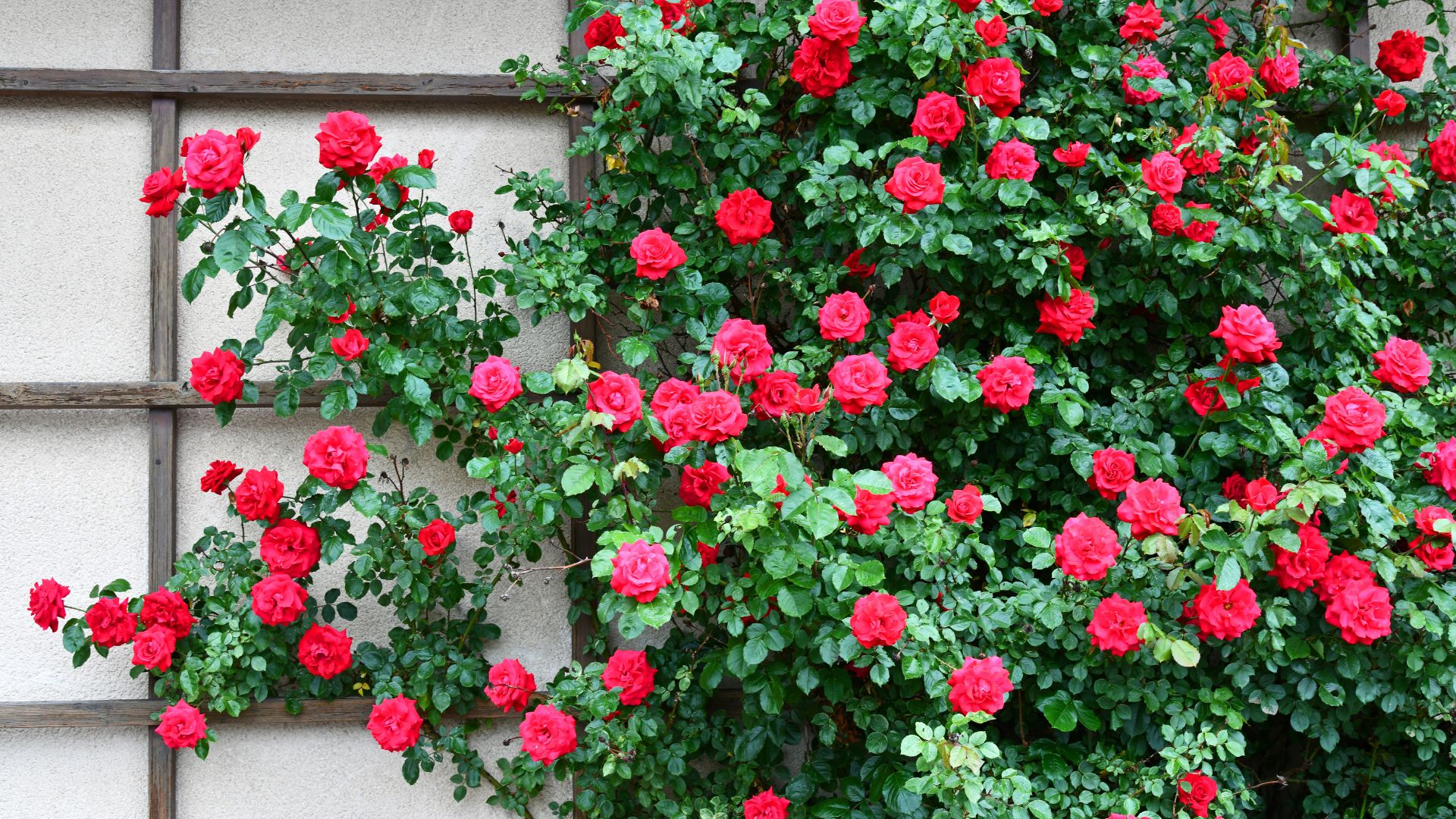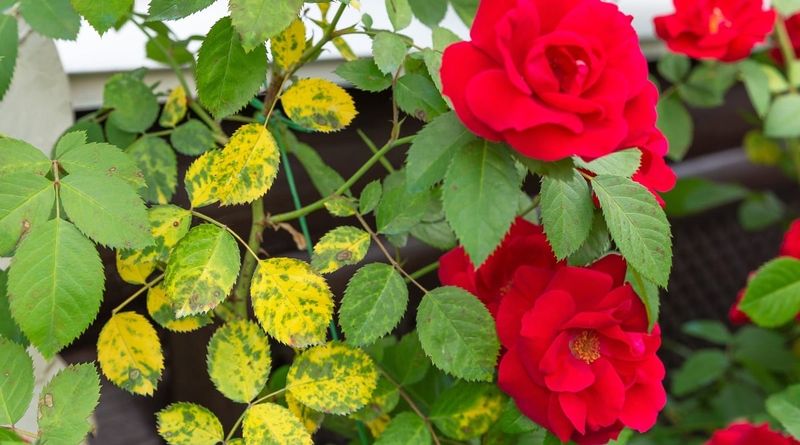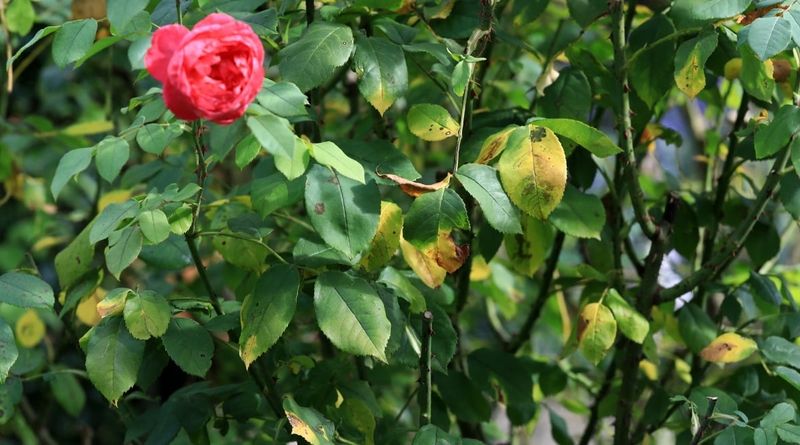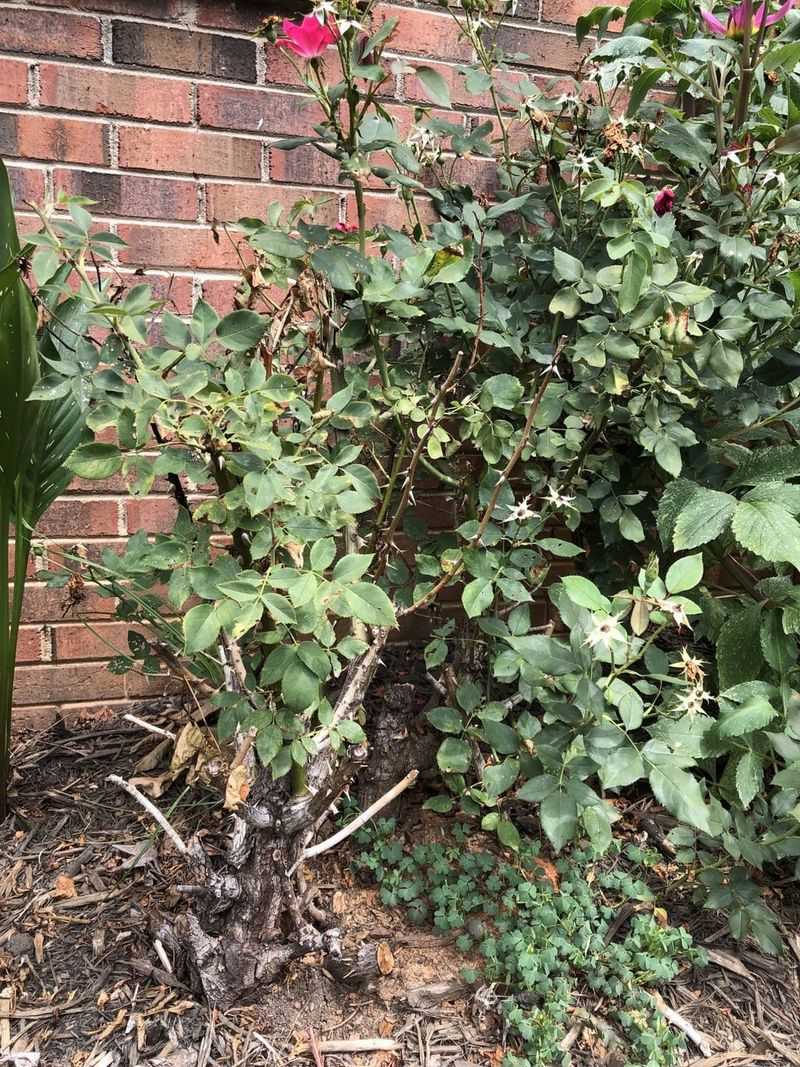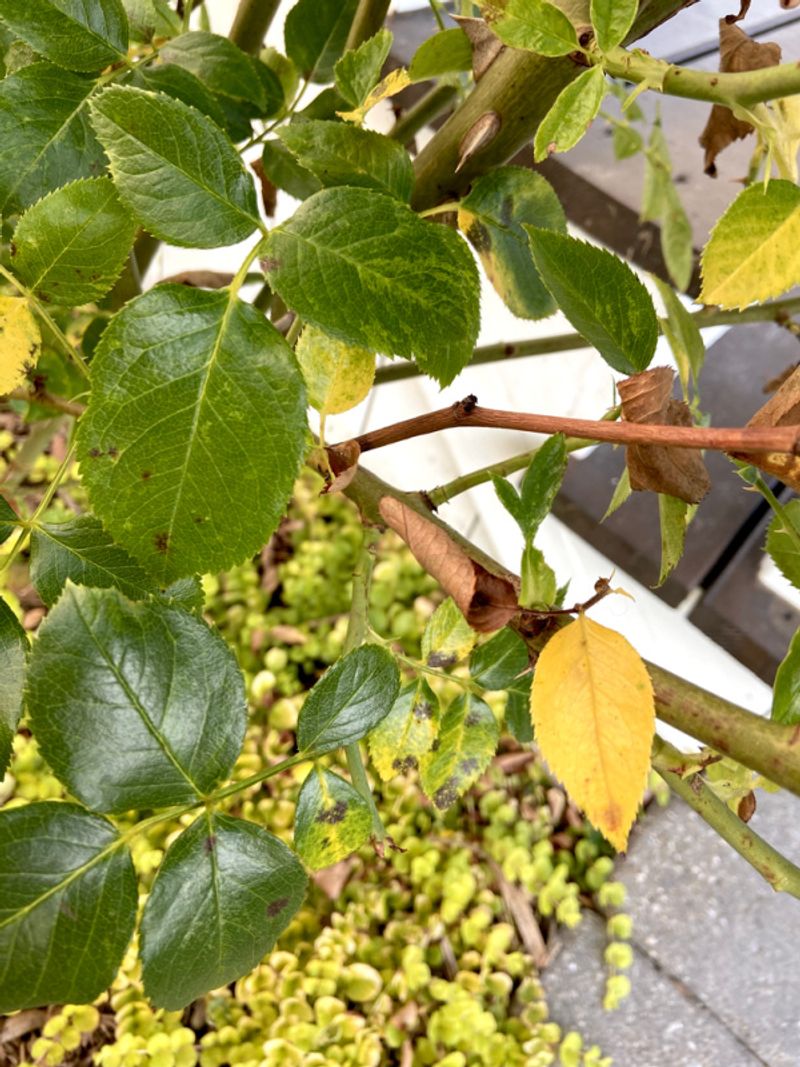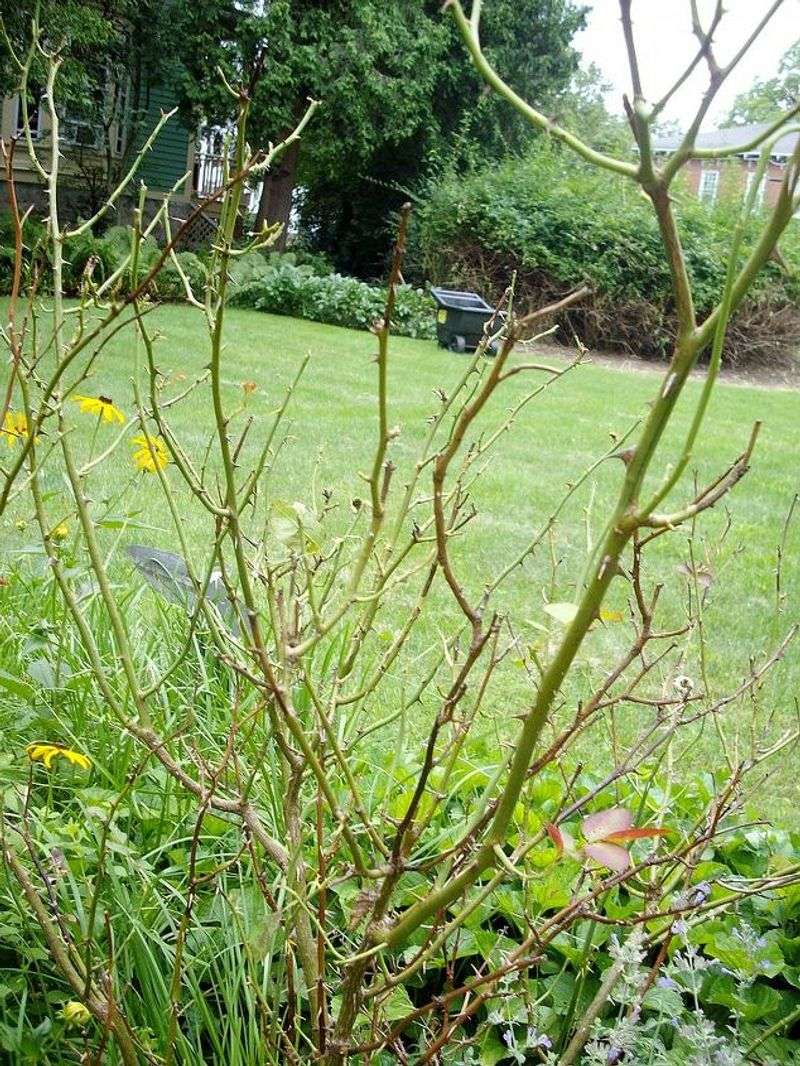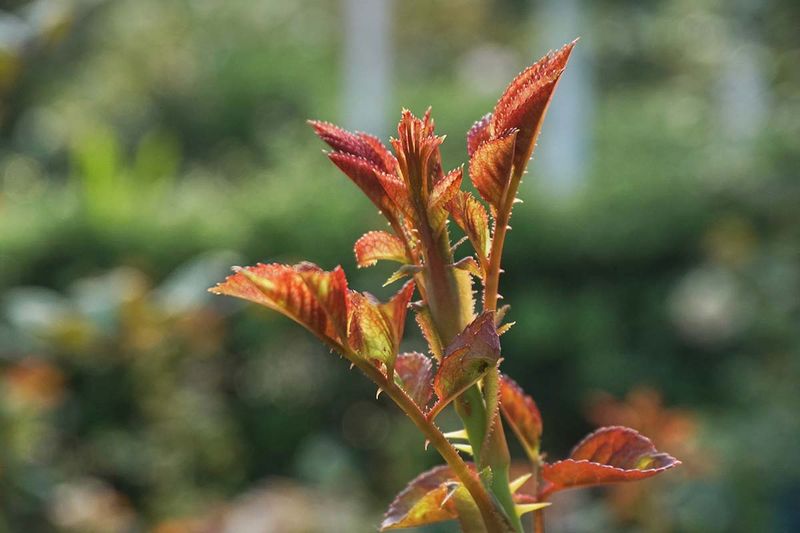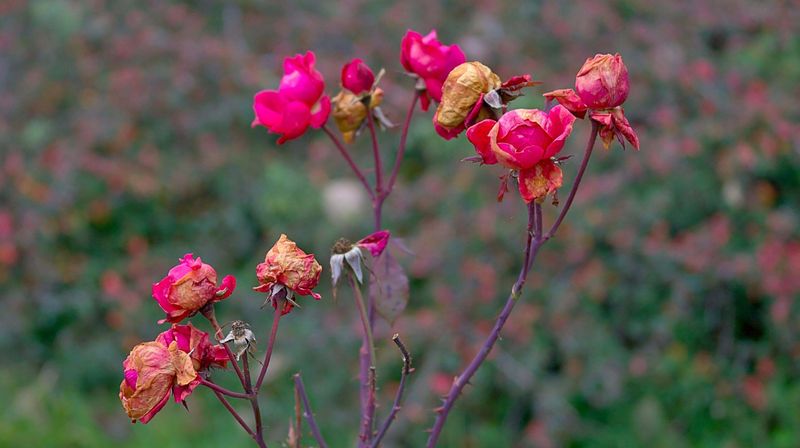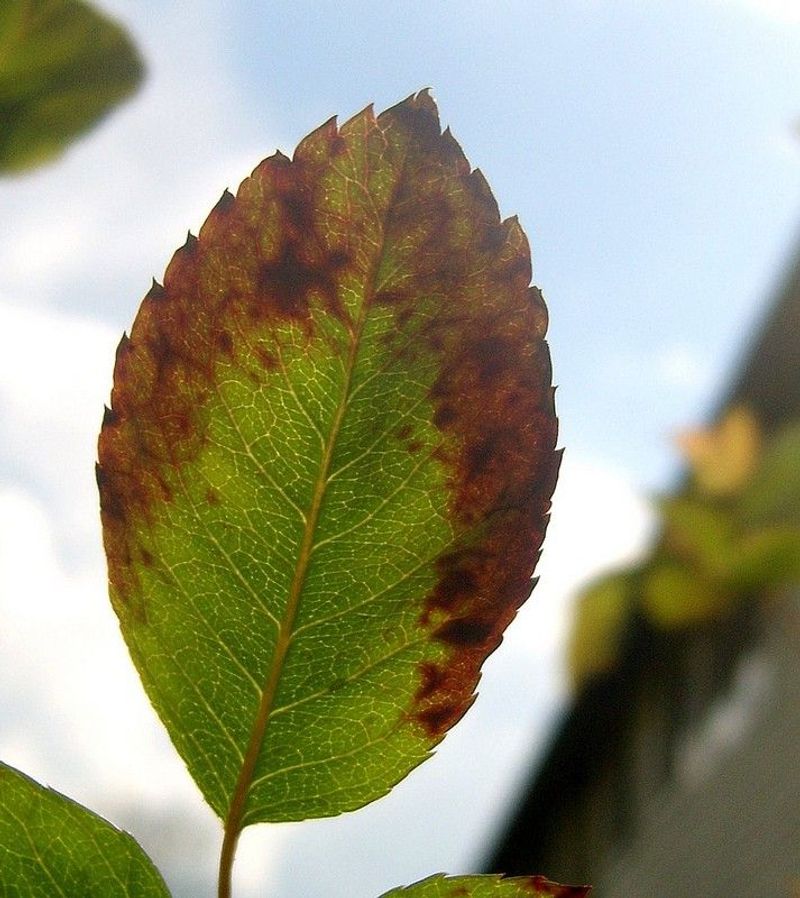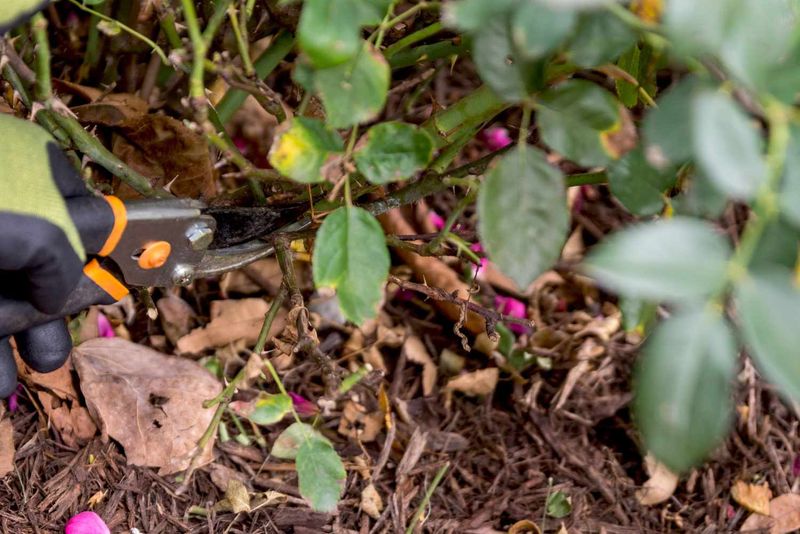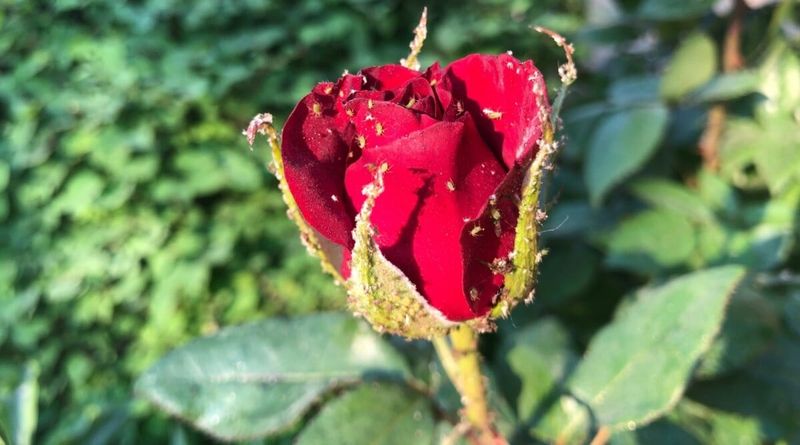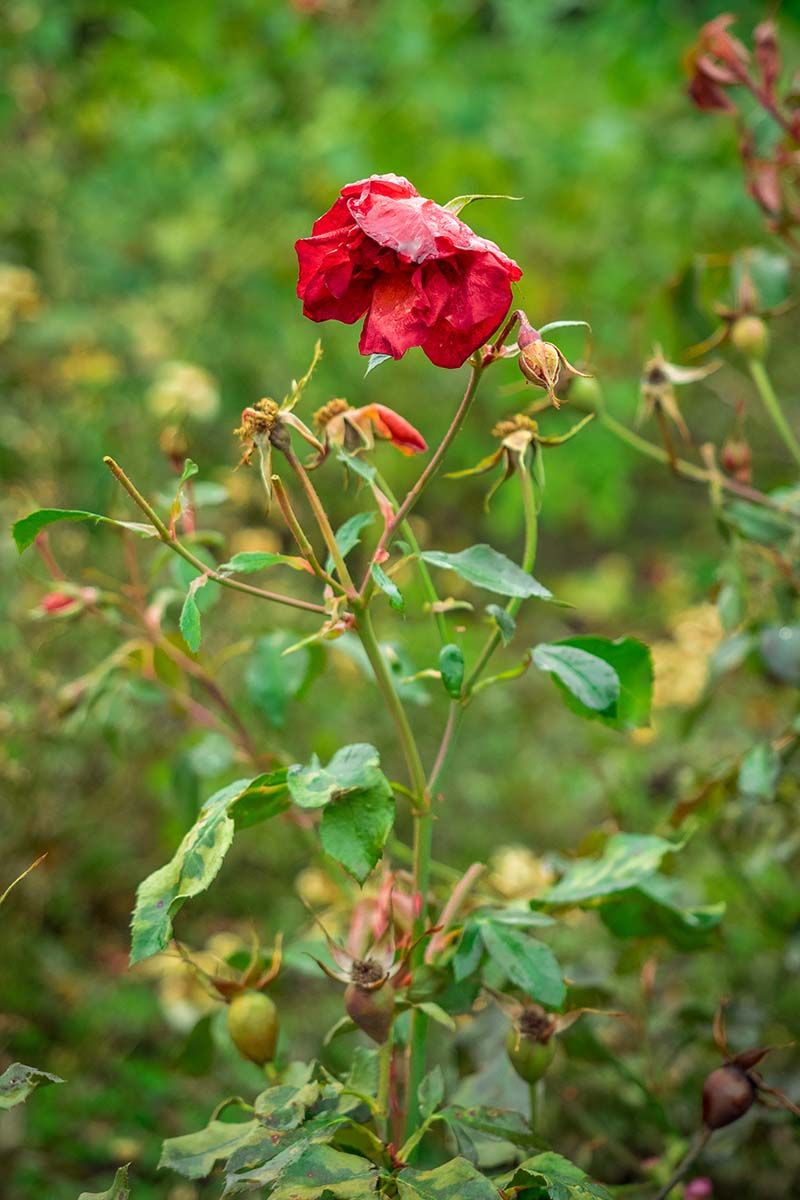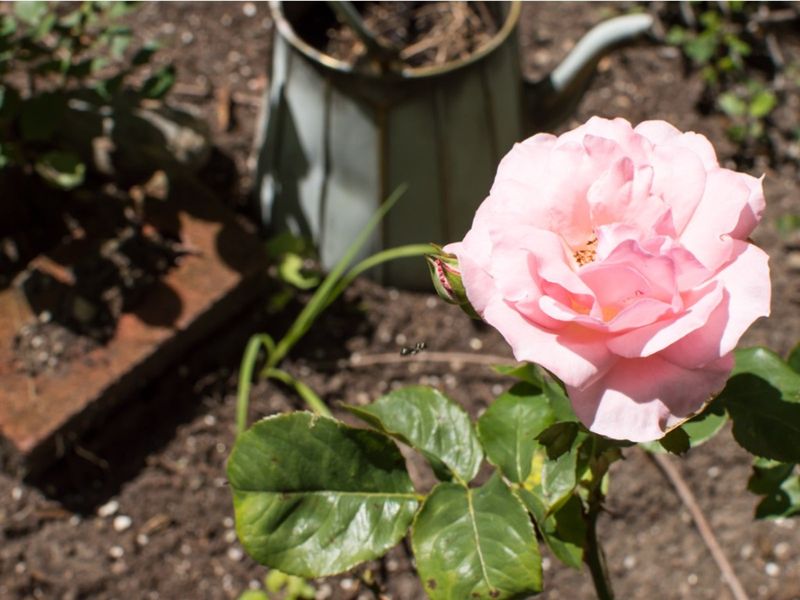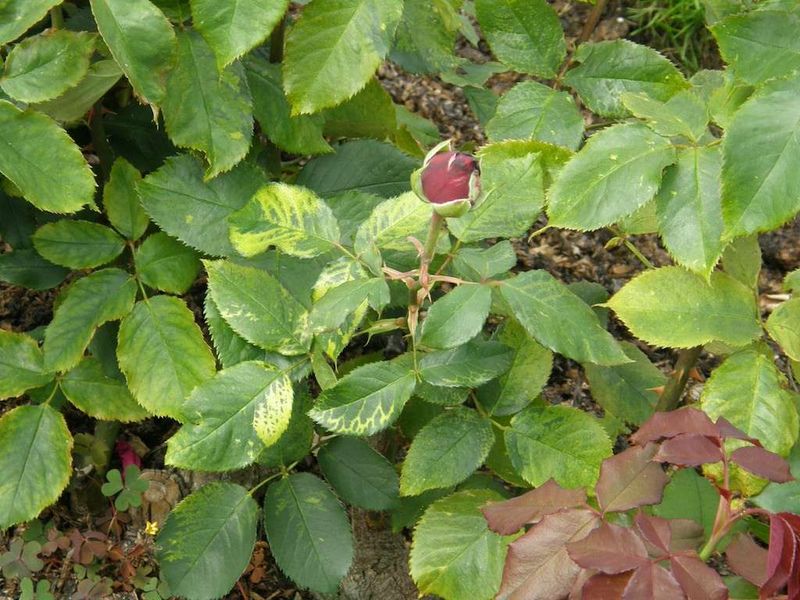Growing roses is a mix of art, science, and a bit of gut instinct. They’re stunning when happy but figuring out exactly when they need a little nutritional love can be tricky. Some signs are pretty obvious: yellowing leaves, fewer blooms, or stunted growth.
But others? They’re subtle—like leaves losing their shine or buds that don’t fully open. That’s where a little observation goes a long way. I’ll walk you through 15 signs that can help you figure out if your roses are asking for a boost or if they’re content right where they are.
Whether you’re new to rose care or just want a refresher, these tips will help you keep your blooms happy, healthy, and bursting with color.
1. Fading Leaf Color
When the leaves of your rose bushes start losing their deep green hue, it might be a sign they need feeding. Sometimes, environmental factors contribute to this fading, but often it indicates nutrient deficiency.
Carefully observe the extent and pattern of the color change to determine if fertilization is necessary. Contrast in foliage color provides clues about your plant’s health, and a subtle change could signal it’s time to intervene.
If you’ve noticed this symptom, consider a balanced fertilizer to restore the vibrant green.
2. Stunted Growth
Stunted growth can be frustrating, especially when your roses seem reluctant to grow taller or produce new shoots. This stagnation might result from competing plants or depleted soil nutrients.
Observing your rose’s growth pattern can help identify underlying issues. Compare their height and bushiness with previous seasons.
your roses appear stuck in a growth rut, a nutrient-rich fertilizer might provide the boost they need. Ensuring adequate sunlight and water complements fertilization efforts, fostering healthier growth.
3. Few Or No Blooms
A lack of blooms is a telltale sign something might be amiss. Roses are celebrated for their blossoms, so a bloomless bush is disappointing.
Nutritional deficiencies often lead to this issue, as blooms require different nutrients to develop. Monitor your bush over several weeks; if buds fail to appear, a targeted rose fertilizer could help.
Patience is key, as recovery may take time. Providing consistent care, including regular watering and proper pruning, supports bloom growth along with fertilization.
4. Yellowing Leaves
Yellowing leaves on roses often indicate a need for fertilization but can also point to overwatering or pests. It’s crucial to identify the root cause before applying fertilizer.
Inspect the yellow leaves for patterns, such as uniform color change or spots. This symptom might require a balanced mix of nutrients, particularly nitrogen, to restore health.
Keep an eye on watering practices and inspect for signs of pests. Once you confirm nutrient deficiency, fertilization can bring back the leaves’ natural green hue.
5. Weak Or Thin Stems
Thin, spindly stems can make a rose bush appear frail and unsupported, often due to insufficient nutrients. This issue might result from a lack of essential minerals like potassium, which strengthens stems.
Evaluate the overall structure of your bush, particularly new growth. Correcting this problem requires a fertilizer rich in the nutrients that bolster plant structure.
Pruning weak stems can also direct energy towards healthier growth, supporting a stronger, more resilient rose bush.
6. Sparse Foliage
Sparse foliage is not just an aesthetic issue; it signals potential nutrient deficiencies affecting rose health. If your bush looks bare or lacks the lushness of a healthy plant, it may need feeding.
Monitor how quickly leaves are falling off and new ones are forming. A slow leaf turnover rate often indicates a lack of nutrients necessary for growth.
Fertilizing can rejuvenate your rose bush, increasing leaf density and promoting overall vitality. Ensure you address any other environmental stresses as well.
7. Discolored New Growth
New growth on roses should be vibrant and healthy. If new shoots appear discolored or pale, it could point to a lack of essential nutrients.
This sign often precedes more noticeable deficiencies, so early detection is beneficial. Compare the color of new and mature leaves to gauge the bush’s health. Fertilizing can correct these imbalances, enhancing the vibrancy of new growth.
A specialized rose fertilizer can provide the necessary nutrients to promote strong, colorful shoots, ensuring your plant’s continued development.
8. Drooping Blooms
Drooping blooms can be both an aesthetic and health concern, often indicating underlying issues. This droopiness might stem from nutrient shortages, particularly those affecting water regulation.
Examining the plant’s watering schedule and soil can help diagnose the issue. Addressing this problem involves balancing fertilization with adequate hydration.
Using a well-rounded fertilizer can provide the nutrients needed to support bloom vitality. Ensuring proper drainage and avoiding waterlogged soil also helps maintain bloom health.
9. Brown Leaf Edges
Brown edges on rose leaves are often a sign of stress, potentially linked to insufficient nutrient supply. While environmental factors can contribute, nutrient deficiencies often exacerbate the condition.
Carefully check the soil and overall plant health to identify the primary cause. A balanced fertilizer can help alleviate this problem, restoring leaf health.
Regular monitoring of the plant’s environment ensures that other factors like watering and sunlight are optimal, supporting recovery and growth.
10. Slow Recovery After Pruning
Pruning typically stimulates growth, but slow recovery can indicate a lack of necessary nutrients. This delay can be frustrating, especially when expecting a burst of new growth.
Observing the plant’s response after pruning helps identify potential nutrient needs. If your rose bush doesn’t bounce back quickly, consider a nutrient boost.
Applying a fertilizer specifically formulated for roses can encourage the regeneration process, helping the plant recover more swiftly and healthily after pruning.
11. Frequent Pests
An abundance of pests can sometimes indicate your rose bush is stressed or lacking nutrients. Healthy plants are better equipped to resist pests.
Examine the leaves and stems for signs of infestation, such as holes or sticky residue. Fertilizing may not directly combat pests but can strengthen the plant’s natural defenses.
Consider integrating pest management with fertilization to enhance overall plant health. Ensuring your roses are well-fed and robust will help them better withstand and recover from pest attacks.
12. Wilting Despite Watering
Wilting can be perplexing when watering doesn’t seem to help, often hinting at deeper issues like nutrient deficiencies. Inspect soil moisture levels and root health to rule out other causes.
If wilting persists, it might be time for a nutrient boost. Applying a balanced fertilizer can address underlying deficiencies, revitalizing your plant.
Ensuring proper watering techniques and soil conditions complement fertilization, aiding recovery. By understanding the interplay between water and nutrients, you can restore your rose’s vitality.
13. Reduced Fragrance
The fragrance of roses is one of their most admired traits, and a decrease in scent can indicate a problem. Nutritional deficiencies might affect a rose’s ability to produce its characteristic aroma.
Monitoring fragrance can be a subtle way to assess plant health. If your roses seem less aromatic, consider a feeding regimen with a focus on micro-nutrients.
Addressing nutrient needs can restore the rich scent, enhancing your garden’s sensory appeal. Maintaining balanced nutrition supports overall plant vitality and aromatic blooms.
14. Inadequate Soil Condition
Soil quality is fundamental to rose health, and poor conditions often necessitate fertilization. Dry, compacted, or nutrient-deficient soils can hinder growth and bloom production.
Assess the soil’s texture and moisture levels regularly, particularly in the growing season. Improving soil condition through organic matter and targeted fertilization enhances nutrient availability.
Ensuring the soil is rich and well-drained supports healthy root development and overall plant vigor. A robust soil environment fosters resilient roses, capable of thriving throughout the season.
15. Leaf Drop
Excessive leaf drop is more than a seasonal change; it might signal nutrient deficiencies or stress. Observing the timing and extent of leaf drop helps determine the cause.
If it’s unusual for the season, consider nutrient imbalances. A balanced fertilizer can help stabilize leaf production and retention.
Ensuring adequate watering and reducing environmental stressors aids in recovery. Addressing this issue promptly prevents further plant decline, supporting a more robust and flourishing rose bush.

